Case study – Lice skirt
Last reviewed version: 2.19Modeling principles
To model lice skirts in AquaSim, one can apply load formulation Lice skirt for the component type Membrane X (or Membrane).
AquaSim assumes that lice skirts always are modelled as a cylinder. Which membrane panels are upstream of waves and current, and which panels are downstream are kept track of. By this, AquaSim is able to distribute the pressure field around the lice skirt in a realistic manner. To illustrate this pressure field, let us simplify the problem and consider fluid flow around a cylinder. Upstream it will experience pressure drag force, and downstream suction drag. On the upper and lower sides, the cylinder will experience lift forces.
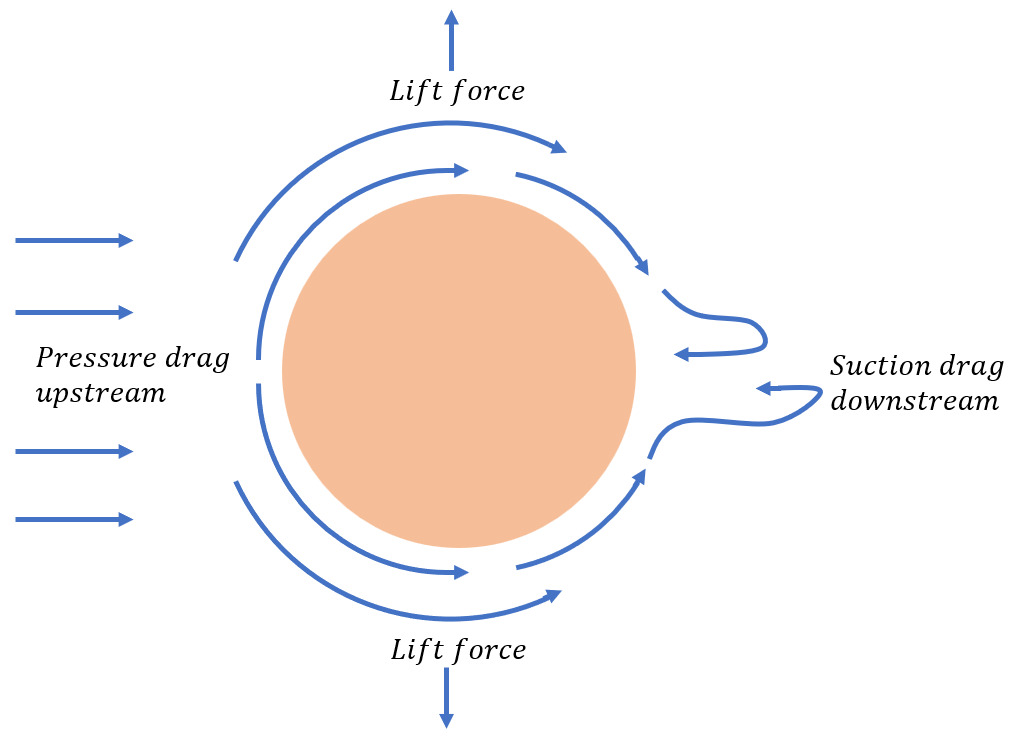
A consequence of AquaSim being able to keep track of what is upstream and downstream, is that each lice skirt must be modelled as its own component group. If you for example have a model of an aquaculture facility with 2 by 2 cages, you will need to model the lice skirts in 4 individual component groups. This is illustrated below.
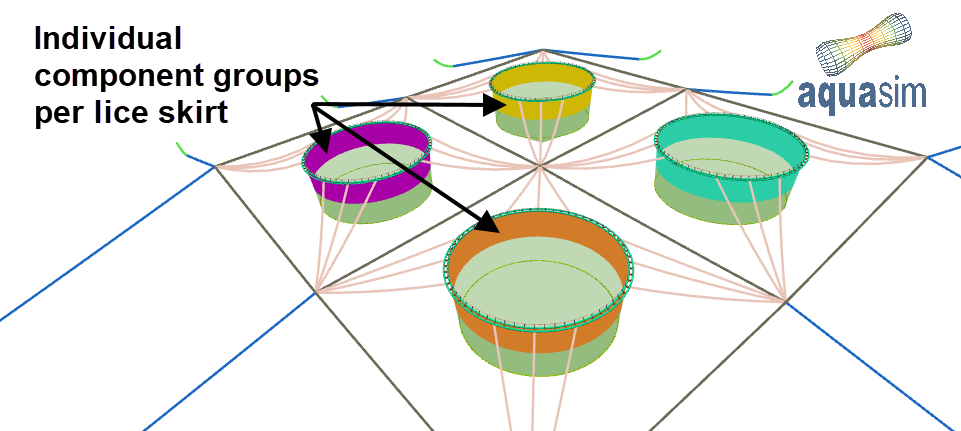
Lice skirt parameters
For the next steps, may use the AquaSim model LiceSkirt.amodel, following this tutorial. You are to finish the model by input appropriate parameters to the lice skirt.
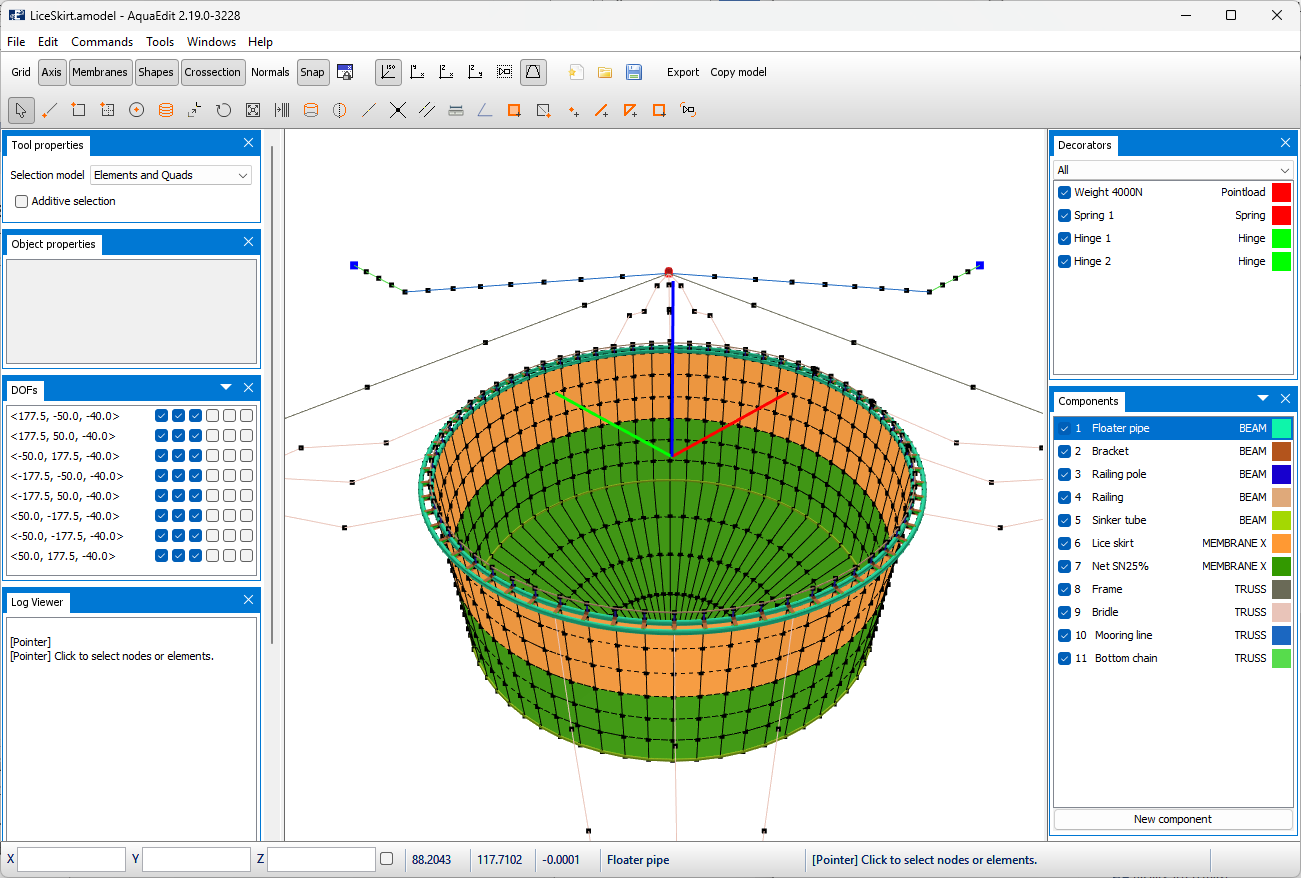
The model contains a classical configuration with a PE floating collar and a permeable net mounted in a frame anchoring system. Attached to the net, is the lice skirt. The lice skirt is modelled with membrane type Normal in combination with Load formulation Lice skirt.
Double click on the component type 6 Lice skirt, in the components window, and navigate to the Load properties tab. This tab provides input parameters that is relevant for the type of dense fabrics as lice skirt.
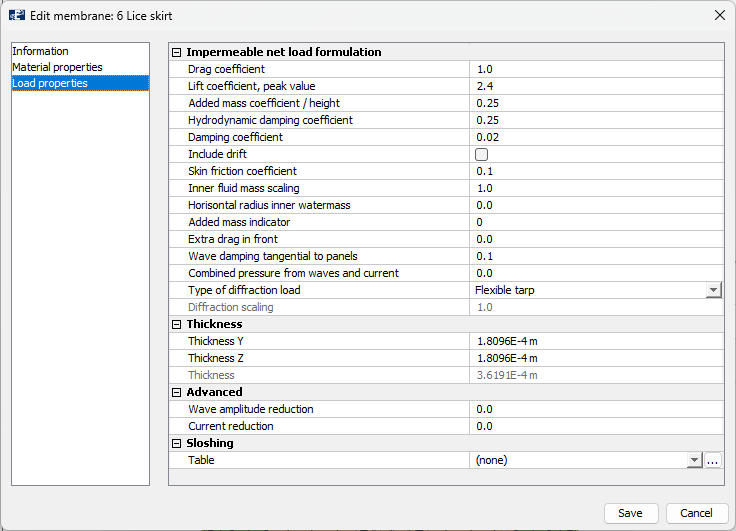
In the next sections, the different parameters are presented – what they mean and how they can be used. Please note that there is no conclusion at which level the different parameters should be at. Suggestions and what to have in mind when deciding upon the numbers are presented.
Drag coefficient
The drag coefficient Cd is a unitless quantity that decides the magnitude of the pressure drag resistance. Let us consider the cylinder: pressure drag resistance is a force that is exerted on the cylinder when exposed to fluid flow. Upstream one will have pressure drag and downstream suction drag. If we consider one cylinder panel, the flow velocity is decomposed into a normal- and tangential component. Then the appropriate drag- and lift force is found from this. The drag acts normal to the cylinder panel. Drag coefficient is normally determined empirically through experiments such as tank tests.
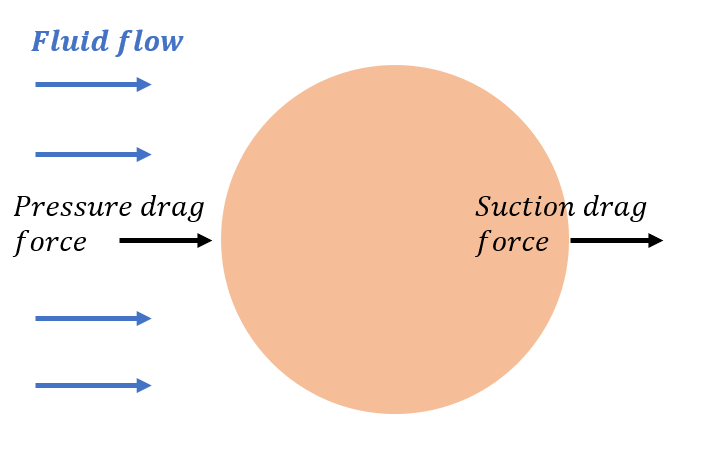
From the input drag coefficient Cd, AquaSim distributes the pressure drag on membrane panels upstream and downstream of the cylinder. The relation between input Cd, Cd UPSTREAM and Cd DOWNSTREAM that is found by AquaSim is illustrated in the figure below.
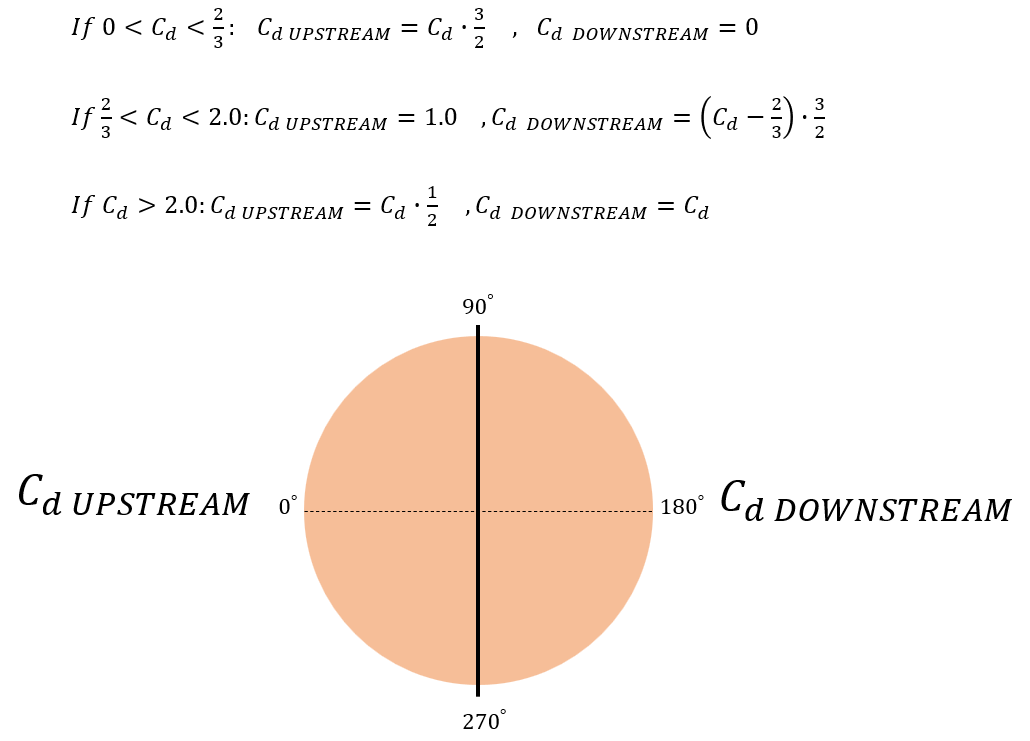
Cp UPSTREAM is applied on cylinder panels that are located 0-90 degrees with respect to the fluid flow. Cp DOWNSTREAM is applied from 90-180degrees. In our case, the drag coefficient Cd is set equal to 1.0.
Lift coefficient, peak value
The lift coefficient Cl is a unitless quantity that decides the lift force on the lice skirt. The lift force decides how much outwards force is exerted on the cylinder. Considering a cylinder panel: the lift force acts in normal direction.
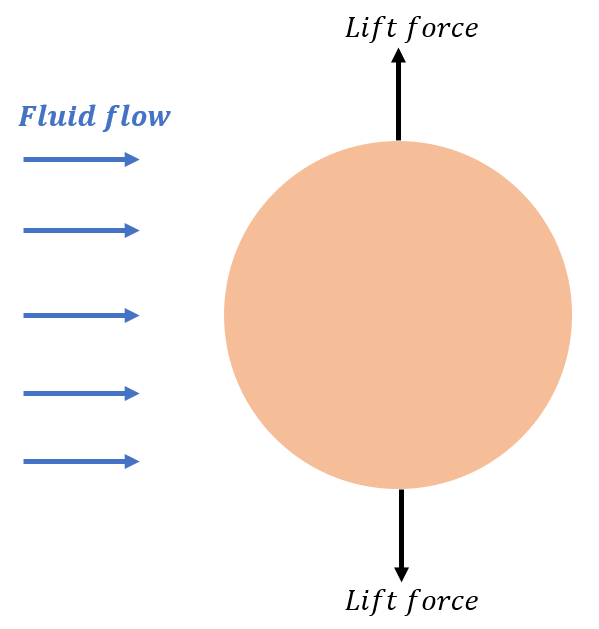
Cl is applied to each panel around the cylinder. In our case, the lift coefficient is set to 2.4.
Added mass coefficient/ height
Added mass is the amount of water the cylinder must move on the outside in order to displace. Such mass is often interpreted as an inertia added to the cylinder. This added mass acts normal to the cylinder panel.
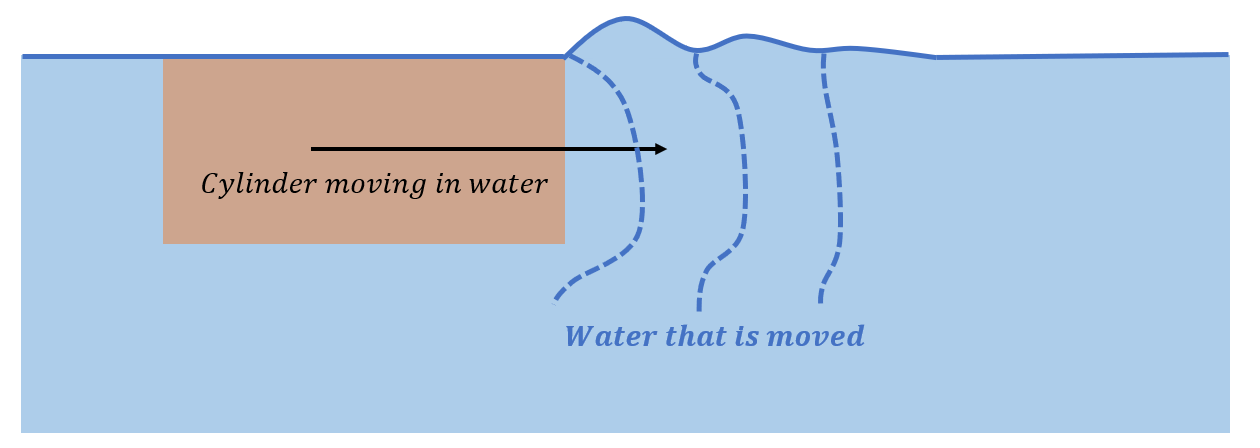
As AquaSim keep track of which panels are upstream and downstream, it also finds the radius R of the lice skirt. Let us call the Added mass coefficient/height CAMass, and it is related to the 2D-volume V2D of the cylindrical lice skirt. How this parameter should be interpreted depends on what you select as Type of diffraction load further down in the menu:
-
MacCamy-Fuchs:
If this method is selected, then Added mass coefficient/ height is interpreted as a unitless quantity that acts normal to the lice skirt panel. This coefficient is multiplied with the radius of the cylinder: $${\text{Added mass} = V_{2D} \cdot \rho = \pi (R \cdot C_{\text{AMass}})^2 \cdot \rho}$$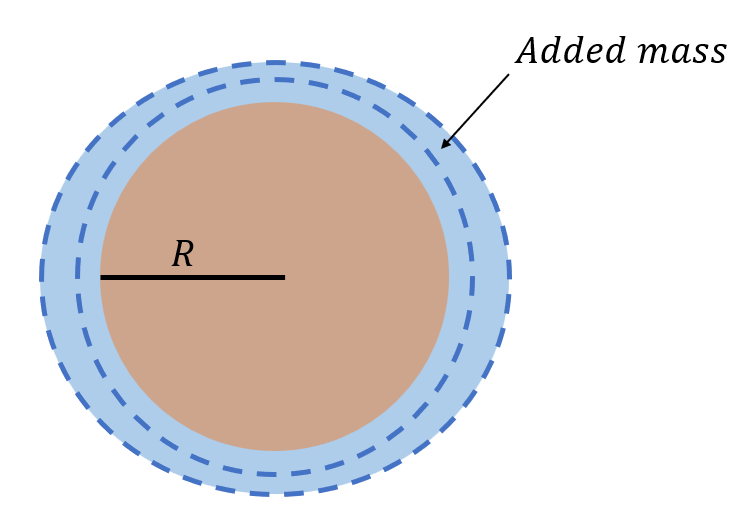
-
Numerical diffraction:
Selecting this method, the added mass is calculated automatically by AquaSim. The Added mass coefficient/ height should then be interpreted as a scaling factor with respect to the added mass AquaSim has found. If this parameter is equal to 1.0, then 100% of the added mass that AquaSim found is applied. If the parameter is set equal to 0.5, then 50% of the added mass is applied. -
Flexible tarp:
Treats the added mass in the same manner as MacCamy-Fuchs.
Hydrodynamic damping coefficient
Both added mass and hydrodynamic damping is interpreted as inertia that is added to the cylinder. Hydrodynamic damping coefficient is a unitless quantity that dampen accelerations of the membrane panels in the cylinder.
Let us call the Hydrodynamic damping coefficient CHDamp, and it is related to the 2D-volume V2D of the cylindrical lice skirt. How this parameter should be interpreted depends on what you select as Type of diffraction load further down in the menu:
-
MacCamy-Fuchs:
If this method is selected, then Hydrodynamic damping coefficient is interpreted as a unitless quantity that acts normal to the lice skirt panel. This coefficient is multiplied with the radius of the cylinder: $${\text{Hydrodynamic damping} = V_{2D} \cdot \rho = \pi (R \cdot C_{\text{HDamp}})^2 \cdot \rho}$$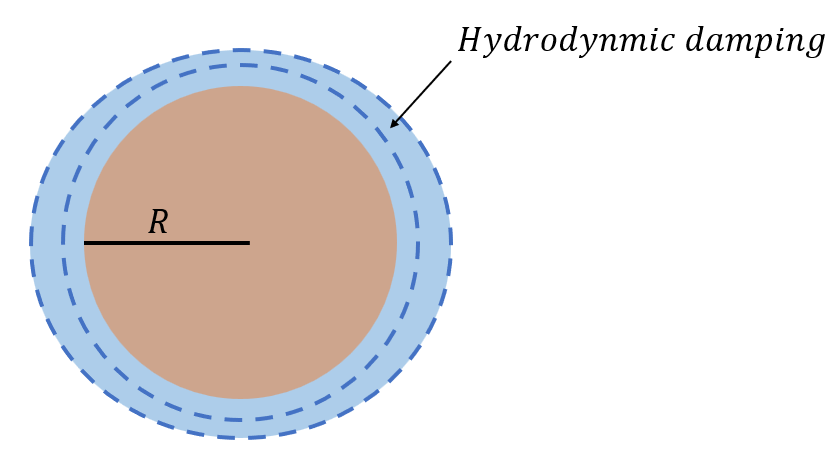
-
Numerical diffraction:
Selecting this method, the hydrodynamic damping is calculated automatically by AquaSim. The Hydrodynamic damping coefficient should then be interpreted as a scaling factor with respect to the hydrodynamic damping AquaSim has found. If this parameter is equal to 1.0, then 100% of the added mass that AquaSim found is applied. If the parameter is set equal to 0.5, then 50% of the added mass is applied. -
Flexible tarp:
Treats the hydrodynamic damping in the same manner as MacCamy-Fuchs.
Damping coefficient
This coefficient is intended to describe the inertia that arise from waves and viscous effects. Viscous effects can be interpreted as friction due to the water particles close tend to stick to the cylinder surface, this friction contribute to slow down and dampen the acceleration of the cylinder.
This coefficient can be interpreted as an amplification factor, as it is multiplied with the total mass and added mass of the cylinder. This type of damping is acting normal to the cylinder panel.

Damping can be introduced to reduce the acceleration and response of the cylinder. But be careful, so you do not “dampen out of trouble”. Too much damping will give a slow and unrealistic response of your structures.
Let us call the Damping coefficient for CDamp. This type of damping is found as:
$${\text{Damping} = \frac{C_{\text{Damp}} \cdot A \cdot \rho \cdot g}{\omega}}$$
where A is area of the cylinder panel, ρ is fluid density, g is gravity and ω is the frequency of the wave peak period.
Having selected the Type of diffraction load to Hybrid flexible tarp/ Numerical diffraction and Diffraction scaling = 0.25: letting Damping coefficient = 1.0 will be consistent with having selected the Flexible tarp method.
Include drift
Drift forces are the mean forces that act on the cylinder by incoming waves. These forces are nonlinear and are due to the cylinder absorb or reflect the waves. How much drift force that acts on a structure depends on aspects such as water plane area and the stiffness of the structure. A structure with a small waterplane area is less likely to reflect waves than a structure of larger area. Similar, a stiff and rigid structure has larger potential to reflect incoming waves than flexible structures that deforms easily. Over time, this force will contribute to the cylinder slowly moving.
Due to loads being calculated to the instantaneous free surface, drift forces will always occur. But when the Include drift is selected, all load parts that contribute to drift is accounted for, this also include the velocity-term in Bernoulli’s equation.
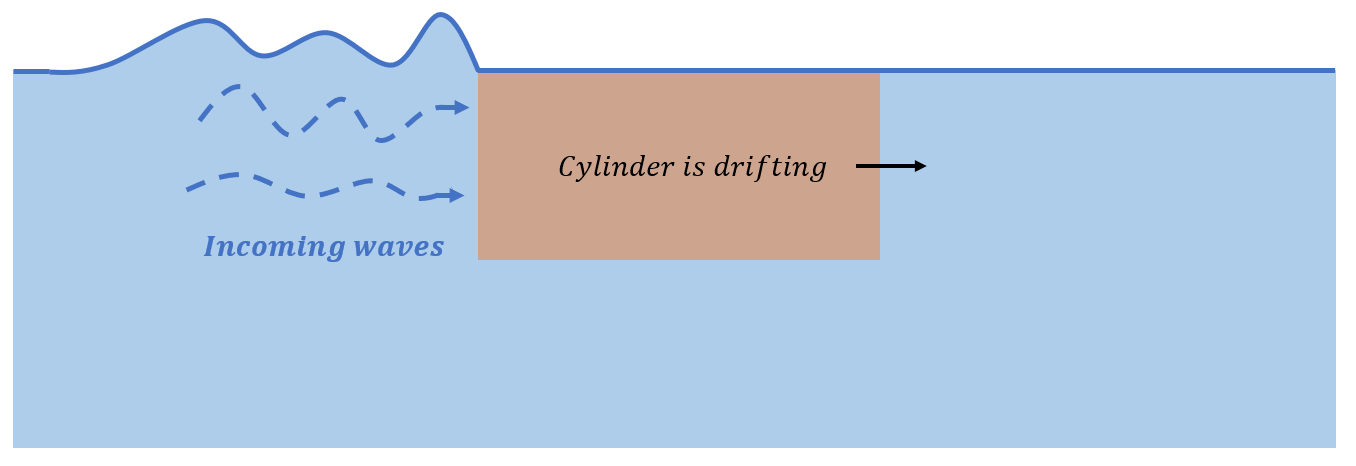
Skin friction coefficient
Skin friction drag is a resistance force that is exerted on the cylinder when exposed to fluid flow. It is caused by the viscosity in the fluid flow. The skin friction coefficient is a unitless quantity that decides the magnitude of the skin friction drag. In oppose to the pressure drag that acts normal to the cylinder panel, the skin friction drag acts in tangential direction of the cylinder panel.
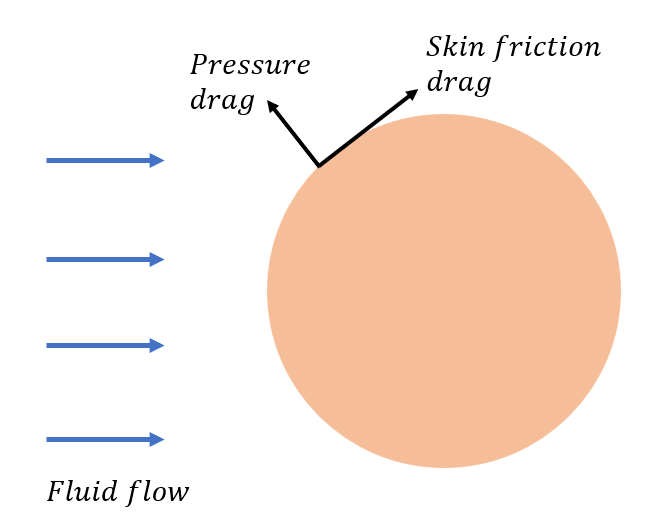
Inner fluid mass scaling
This factor regulates how much of the water inside the cylinder is accelerated due to cylinder motions. If this factor is 1.0 then 100% of the water volume inside the cylinder is accelerated. If 0.2, then 20% of the volume is considered, and so on. Hence, this parameter should be between 0 and 1.0.
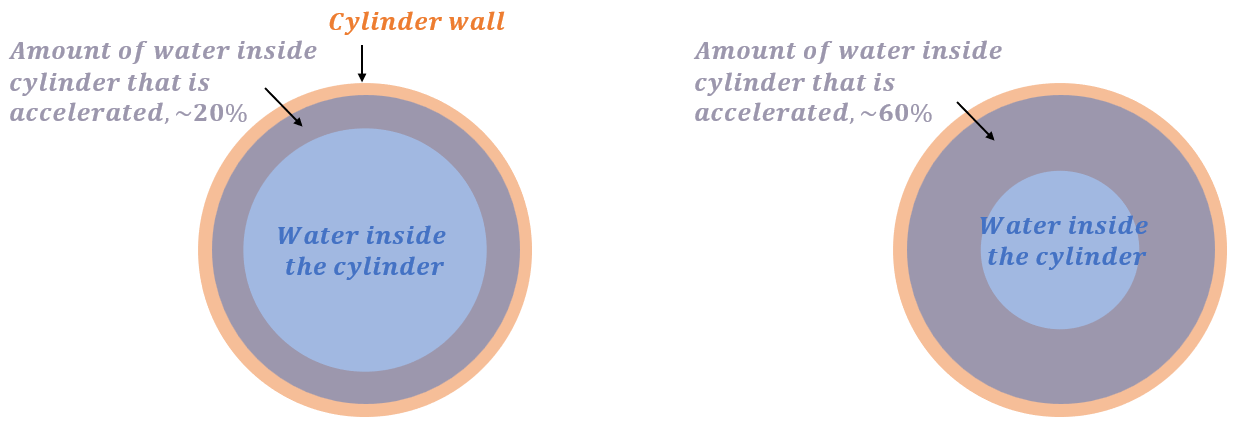
The larger this factor the slower the cylinder response becomes, because more water mass must be moved. The cylinder also becomes stiffer since more water must be accelerated to move the cylinder.
Horizontal radius inner watermass
As explained in the section Added mass coefficient/ height, AquaSim find the radius R of the cylinder automatically. The user may encounter situations where this radius is not applicable, for example if the lice skirt is not shaped as a cylinder. The user may override this radius by using Horizontal radius inner watermass.
If this parameter is equal to 0, then the radius found by AquaSim is applied. If any other number is inserted, this is interpreted as the radius in meters.
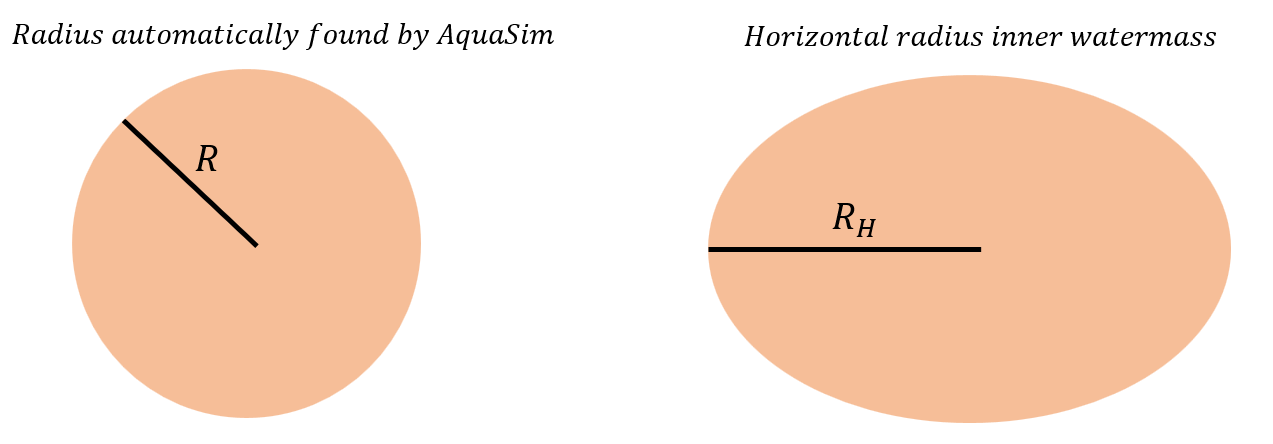
Added mass indicator
This parameter decides how the added mass should behave. You may choose to find the added mass calculated to the mean free surface in steady state condition. Or, to the actual water line, including wave elevation, during the analysis.

Wave damping tangential to panels
The inertia force Damping works in the direction normal to the cylinder panels. Normally, due to convergence issues, one may choose to introduce wave damping also in tangential direction to the cylinder panels. Wave damping tangential to panels is the tangential part of the force from Damping. This parameter is a factor that indicates how large portion of Damping that also should work in tangential direction. If 0.2, then 20% of the Damping force should also work tangential to the panels.
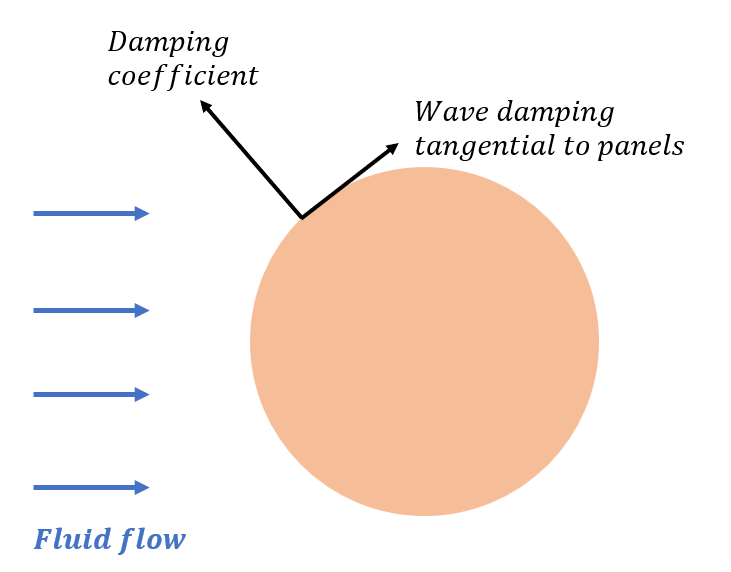
It is expected that our lice skirt will experience some deformation due to the waves and is set to 0.1.
Combined pressure form waves and current
This parameter says something about how the relative velocity between the cylinder and the fluid flow (due to current and waves) should be treated on each cylinder panel in your model. It can be a number between 0 and 1.0.
If this parameter is 0, then the ‘raw’ relative velocity at each of the panels is used as basis for finding the pressure drag. This is illustrated in the figure below (leftmost), where the pressure drag on each of the cylinder panel is based on the relative velocity each individual panel experience itself.
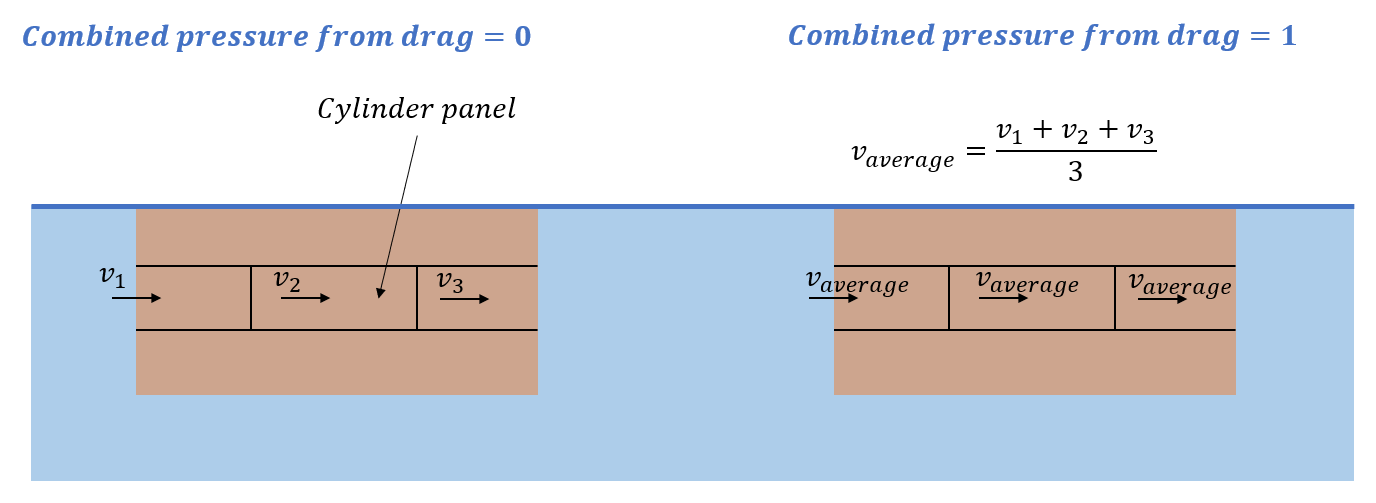
But if this parameter is 1.0 (see rightmost cylinder in the figure above), then AquaSim first averages the relative velocity over all cylinder panels at the same vertical position. Then the pressure drag is found for each panel.
- Cylinder is restrained: forces and moments on the cylinder when it is restrained from moving, and current and waves are present. Diffraction forces are a part of this.
- Cylinder is moving: forces and moments on the cylinder when it is forced to move in water. Added mass and damping is a part of this.
The two sub-problems are illustrated below.
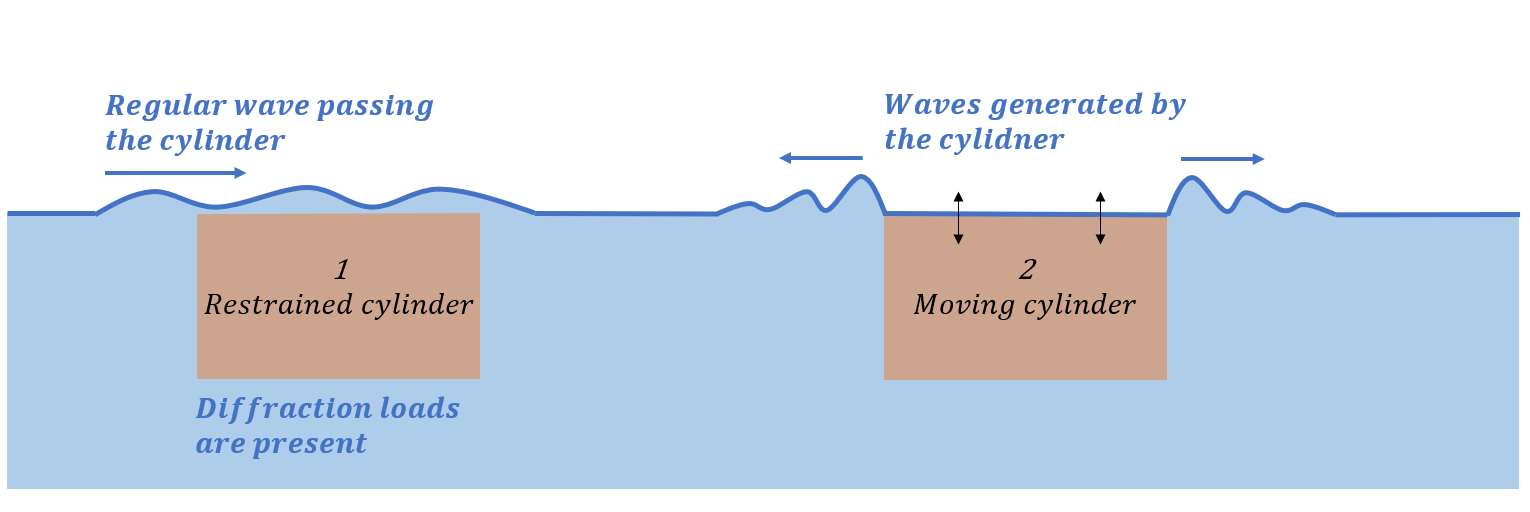
AquaSim has several methods for calculating the diffraction force, and the different methods are adapted to different types of structures. The MacCamy Fuchs and Numerical methods are adapted for rigid and stiff structures, while Flexible tarp is developed for soft and deformable fabrics such as lice skirts. There are also possible to combine the different methods. The hybrid solution between two methods has shown beneficial for lice skirts: Hybrid flexible tarp/ Numerical diffraction, where the Flexible trap is weighted 75% and Numerical diffraction 25%. This is evident from tank tests with a dense tube, see Loads from waves and current on flexible tarps (Berstad, Marine 2021).
Diffraction scaling
If you chose one of the hybrid solutions in Type of diffraction load, this parameter becomes editable. This parameter weights how much of the different methods should be applied. Let us exemplify by considering the Hybrid flexible tarp/ numerical diffraction:
If diffraction scaling is 0.25, then 25% of the total diffraction load is calculated from the Numerical diffraction-method and 75% by the flexible tarp.
If 0.5, then the two methods are weighted 50%-50%.
Wave amplitude reduction
This parameter reduces the amplitude of the incoming wave on the cylinder. Useful if you have certain objects upstream of your cylinder, that will reduce the wave exposure. This is a unitless factor where 0.0 correspond to no wave reduction – the wave amplitude will be equal to the input value. If 1.0, then the wave is fully reduced, the wave amplitude will be equal to zero.
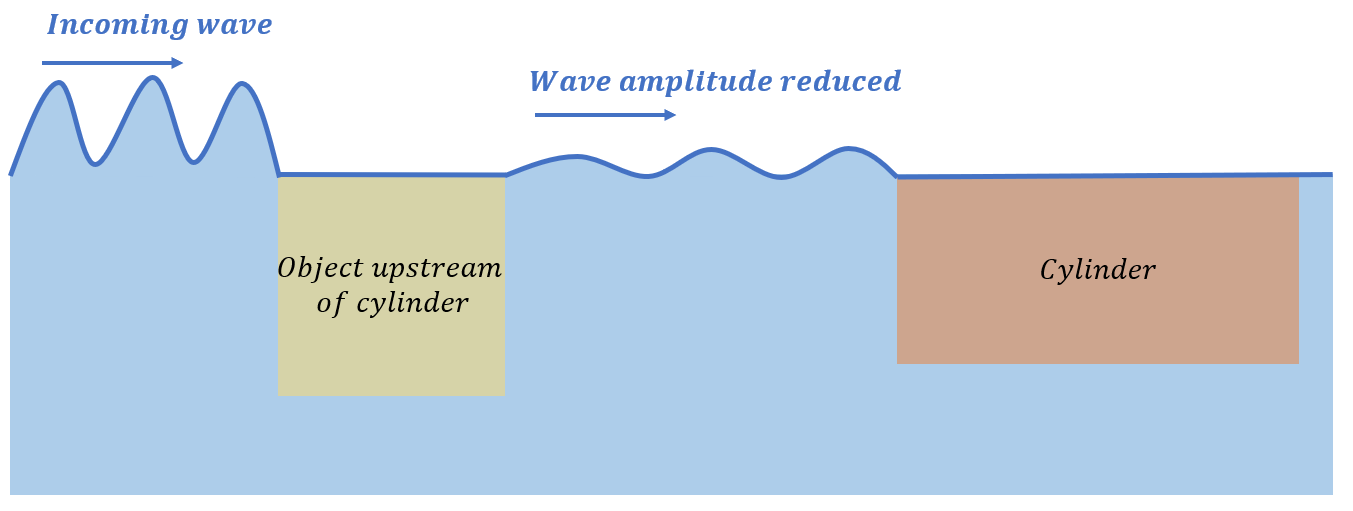
This could be applied on lice skirts that are downstream of other cages. But remember that the direction of the waves changes with the different load conditions. So, the potential wave sheltering effect will not be the same for all lice skirts for all load conditions – it changes.
Current reduction
As for wave amplitude reduction, one may reduce the current velocity on the cylinder. Useful if you have certain objects upstream of your cylinder, that will contribute to reduced exposure to current.
